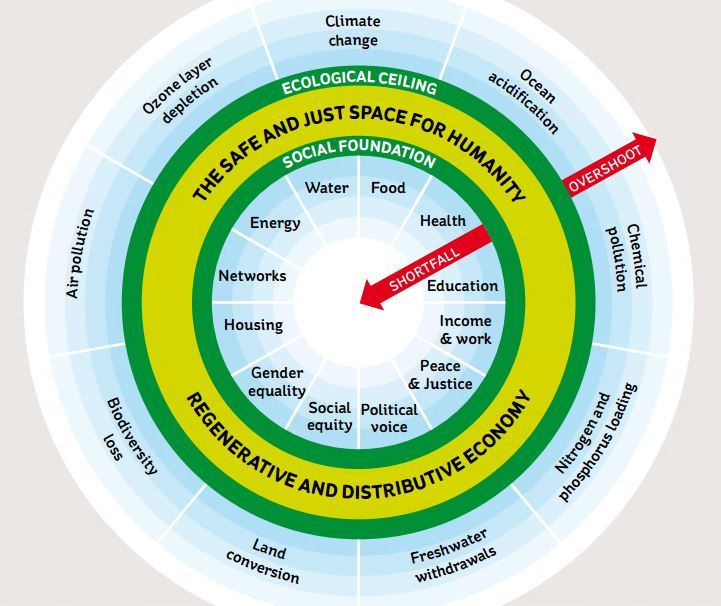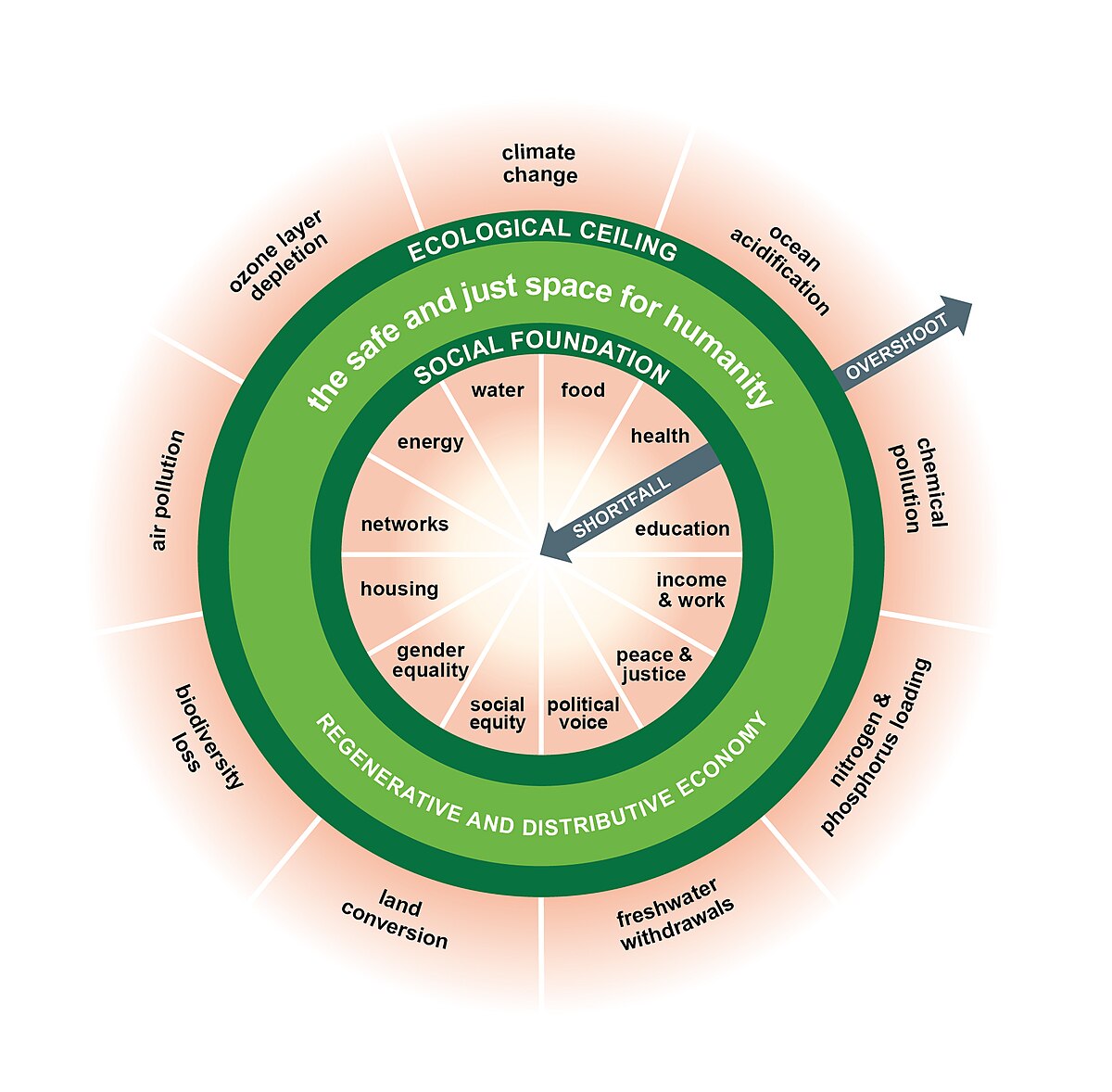

Meeting human needs within planetary limits
This is not financial, legal, or tax advice. It’s provided for educational and entertainment purposes only.


The Doughnut Economics model, developed by Kate Raworth in 2012 and elaborated in her 2017 book, provides a visual framework for sustainable development by combining planetary boundaries with social foundations, shaped like a doughnut or lifebelt.
The inner ring represents the minimum standards for human well-being. It covers essentials such as food, water, healthcare, education, income, housing, gender equality, political voice, and social equity. Falling inside this ring signals unmet needs and deprivation.
The outer ring marks the limits of nine planetary boundaries—climate change, biodiversity loss, chemical pollution, ocean acidification, land conversion, air pollution, and more. Crossing these boundaries risks destabilizing Earth’s life-support systems.
The area between the two rings is the “safe and just space for humanity.” It’s where everyone’s needs are met without harming the planet, defining a regenerative and distributive economy in which people and nature thrive together.